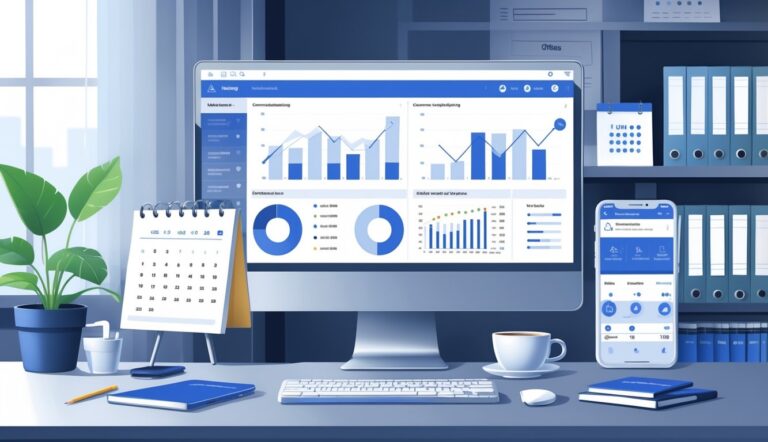Telling clients about rate increases is never fun, but the way you handle these conversations can really decide whether customers stick around or not. If you want these talks to go well, you’ve got to be upfront about what’s changing, give clients a heads-up at the right time, and explain what they’re still getting for their money.

Lots of companies are dealing with this right now. Big names like Nike and Walmart are raising prices because of tariffs.
Utilities like APS want a 14% rate hike for residential customers.
Even local governments are making changes, like Tallahassee bumping up fire fees by 25% to pay for public safety.
The upside? Most clients get it if you explain things clearly.
You just need to communicate honestly, back up your reasons, and show how the changes actually help them.
That way, you keep trust and still look out for your business.
Key Takeaways
- Clear explanations for rate hikes help clients accept changes
- Announcing increases at the right time and in the right way can make reactions less negative
- Tackling common worries early keeps relationships strong
Communicating the Rationale for Rate Increases

When you talk to clients about rate hikes, stick to straightforward facts that show exactly what’s driving the change.
Use real examples—regulatory rules, infrastructure needs, higher operating costs, or old debts that have to be paid.
Explaining Business or Regulatory Drivers
Start with regulatory mandates that force companies to adjust rates.
Public service commissions in most states check up on utilities and set new rules.
These regulatory changes might include:
- Environmental compliance standards that need immediate action
- Grid modernization mandates from state energy departments
- Safety rules after federal reviews
- Renewable energy requirements with set deadlines
When NYSEG or Rochester Gas and Electric Corporation file for new rates, they have to show they’re following these rules.
Make it clear these aren’t optional—they’re required by law.
Lay out the timeline so clients see why things feel urgent.
If a new rule kicks in six months from now, explain why the company has to start preparing today.
Whenever you can, use real numbers.
Instead of saying “big costs,” say “the new safety rules mean $2.3 million in equipment upgrades over 18 months.”
Detailing Infrastructure Upgrades and Investments
Clients should know that old equipment can cause outages and safety problems.
Give them concrete examples of what needs fixing.
Highlight these main investment areas:
| Investment Type | Purpose | Timeline |
|---|---|---|
| Power line replacement | Prevent outages | 2-5 years |
| Transformer upgrades | Handle increased demand | 1-3 years |
| Smart meter installation | Improve service | 6-18 months |
| Substation modernization | Enhance reliability | 3-7 years |
Point out that waiting costs more than fixing things early.
A transformer that fails and causes a blackout is way pricier than replacing it before it breaks.
Use local stories if you have them.
If a storm knocked out power recently, mention how better infrastructure could have helped.
Tie the upgrades to better service.
New equipment means fewer outages, quicker repairs, and happier customers.
Addressing Changes in Cost Structure
Show clients how things like inflation drive up costs, just like in every other business. Rising prices hit utilities too.
Big cost drivers include:
- Materials and equipment up 15-25% each year
- Labor costs rising because skilled workers are hard to find
- Fuel and energy prices that jump up and down
- Tech expenses for cybersecurity and digital upgrades
Frame these as facts of the market, not choices you made.
When copper prices shoot up, so do equipment costs.
Compare your rising costs to other industries.
If construction prices climbed 20% in your area, show how that affects your projects too.
Break down the rate hike by category.
Let clients see how much comes from materials, labor, fuel, and so on.
Contextualizing Legacy Costs and Arrears
Talk about old debts or costs from past years that still affect today’s rates.
These arrears have to be paid off to keep things running smoothly.
Explain how arrears build up:
- Delays in regulatory approvals for past rate changes
- Emergency spending after storms or equipment failures
- Maintenance that was put off until it couldn’t wait anymore
- The lag between rising costs and rate changes
When companies like Rochester Gas and Electric or NYSEG have arrears, these are real costs from services already delivered.
The utility can’t just swallow these losses and still provide good service.
Describe arrears recovery as catching up, not as a fine.
These costs went to work already done for customers.
Use dates to show the lag.
If costs from 2023 show up in 2025 bills, talk about the regulatory process that caused the delay.
Show that paying off arrears now can help avoid bigger hikes later.
Spreading out the payback keeps each increase smaller.
Delivering Rate Increase Messages to Clients

Getting the message across about higher rates means picking the best way to reach your clients and adjusting your approach for each type of customer.
If you explain things clearly and get ready for tough questions, you’ll keep trust even when the news isn’t great.
Choosing the Right Communication Channel
Email usually works best for the first announcement.
It lets people read and think things over without being put on the spot.
You can also attach details and supporting info.
For your bigger clients or tricky situations, pick up the phone.
That way, you can answer questions right away and show you care.
Try to call during business hours when folks are actually available.
Letters feel more official and are good for big changes.
Some clients just like getting things on paper.
Skip these options:
- Text messages (too casual)
- Social media (not private)
- Voicemail (no chance for a real conversation)
If the increase is big, use more than one method.
Start with email, then call anyone who hasn’t replied after a week.
Tailoring Language for Residential Customers
Residential clients want things simple.
Drop the jargon and focus on what it means for their wallet each month, not just percentages.
Use actual dollar amounts.
Say, “your monthly bill will go up by $15” instead of “rates are increasing by 8%.” People want to know what they’ll actually pay.
Put the reasons into plain language. AES Indiana points to storms, upgrades, and inflation for their latest increase.
Try using:
- “Because costs are rising” instead of “market volatility”
- “System improvements” instead of “infrastructure modernization”
- “Better service” instead of “operational efficiency”
Offer payment help right away.
Mention budget billing, payment plans, or energy-saving tips while you’re at it.
Responding to Client Concerns About Gas Bills
Expect common pushback.
People often ask why now, if it’s really needed, or if it’s fair.
Talk about affordability right away.
Have info ready about assistance programs, budget billing, and ways to save energy.
If you can, compare your rates to competitors.
It helps show your prices aren’t out of line.
Here are some common concerns and what you might say:
| Customer Concern | Your Response |
|---|---|
| “I can’t afford this” | “We offer payment plans and budget billing options” |
| “Why now?” | “Costs have risen due to infrastructure needs and inflation” |
| “Other companies charge less” | “Our rates remain competitive when you consider service reliability” |
Let clients know you get that it’s tough, but don’t apologize for what has to be done.
Try, “I know this can make budgeting harder,” instead of “Sorry for the trouble.”
Keep track of every conversation.
Write down their worries and your answers so your whole team stays consistent.
Frequently Asked Questions

Business owners often wonder when to break the news and how to say it without losing trust.
If you want to talk about pricing changes clearly, you’ll need some solid strategies for handling client concerns and keeping things professional.
What is the most professional way to notify clients of a future price increase?
Send written notice at least 30 days before the new rates kick in.
Use your official letterhead or a professional-looking email.
List the exact date and how much the increase is, right up front.
Set up follow-up calls for your biggest clients.
This shows you value their business relationship.
Give them a few ways to reach you with questions.
Make sure you’re around during business hours that first week.
How can I effectively communicate the justification for a rate hike to my customers?
Talk about the specific costs that are pushing your prices up.
Mention supplier costs, labor, or new rules.
Explain that the increase keeps service quality high.
Point out any improvements or extras clients will get.
Use real examples, not just general statements.
Instead of “costs have risen,” try “insurance premiums went up 15% this year.”
Show how your rates compare to others in your industry.
Prove you’re still competitive.
What are the best practices for drafting a price increase notification?
Start by thanking clients for sticking with you.
Let them know you appreciate their trust.
Say how much the increase is right away.
Don’t hide the main point.
Use simple language and skip the technical terms.
Don’t sound apologetic—just be clear and honest.
Give at least 30 days’ notice.
That way, clients can plan ahead.
Wrap up with your contact info.
Offer to talk things over if they want.
Can you provide a guide for announcing service rate changes to customers?
Start telling clients 4-6 weeks before changes take effect.
This gives them time to plan.
Write different messages for different groups.
High-value clients should get a call before a letter or email.
Use more than one way to get the word out.
Try email, letters, and a notice on your customer portal.
Train your team so everyone’s saying the same thing.
That way, clients get consistent answers.
Keep a record of who you told and when.
In what ways should a business handle customer concerns about price increases?
Listen to clients without getting defensive.
Let them know you hear their concerns.
Explain what’s driving up costs.
Give real examples from your industry.
Offer flexible payment options if you can.
Think about longer payment terms or small, gradual increases.
Talk about extra value or services that come with the higher price.
Let clients see what they’re getting.
Be ready to negotiate with your key accounts.
Know ahead of time what discounts or deals you’re willing to offer.
What strategies can be employed to maintain client retention after implementing a rate rise?
Try rolling out loyalty programs that actually reward long-term clients.
You might offer small discounts or give them priority when it comes to scheduling.
After you bump up your rates, step up your service quality right away.
Show clients some real, noticeable improvements so they know what they’re paying for.
Check in with clients regularly during those first 90 days.
If any issues pop up, handle them fast—don’t wait for someone to get frustrated and leave.
Give clients a little extra value without tacking on more charges.
Maybe you can share industry tips, toss in a free consultation, or send out some helpful resources.
Keep a close eye on how satisfied your clients are after the price change.
Run a quick survey or two so you can spot any problems before they turn into cancellations.
Consider setting up referral incentives for your current clients.
If they bring in new business, thank them—maybe with a reward or discount to make up for any losses.






